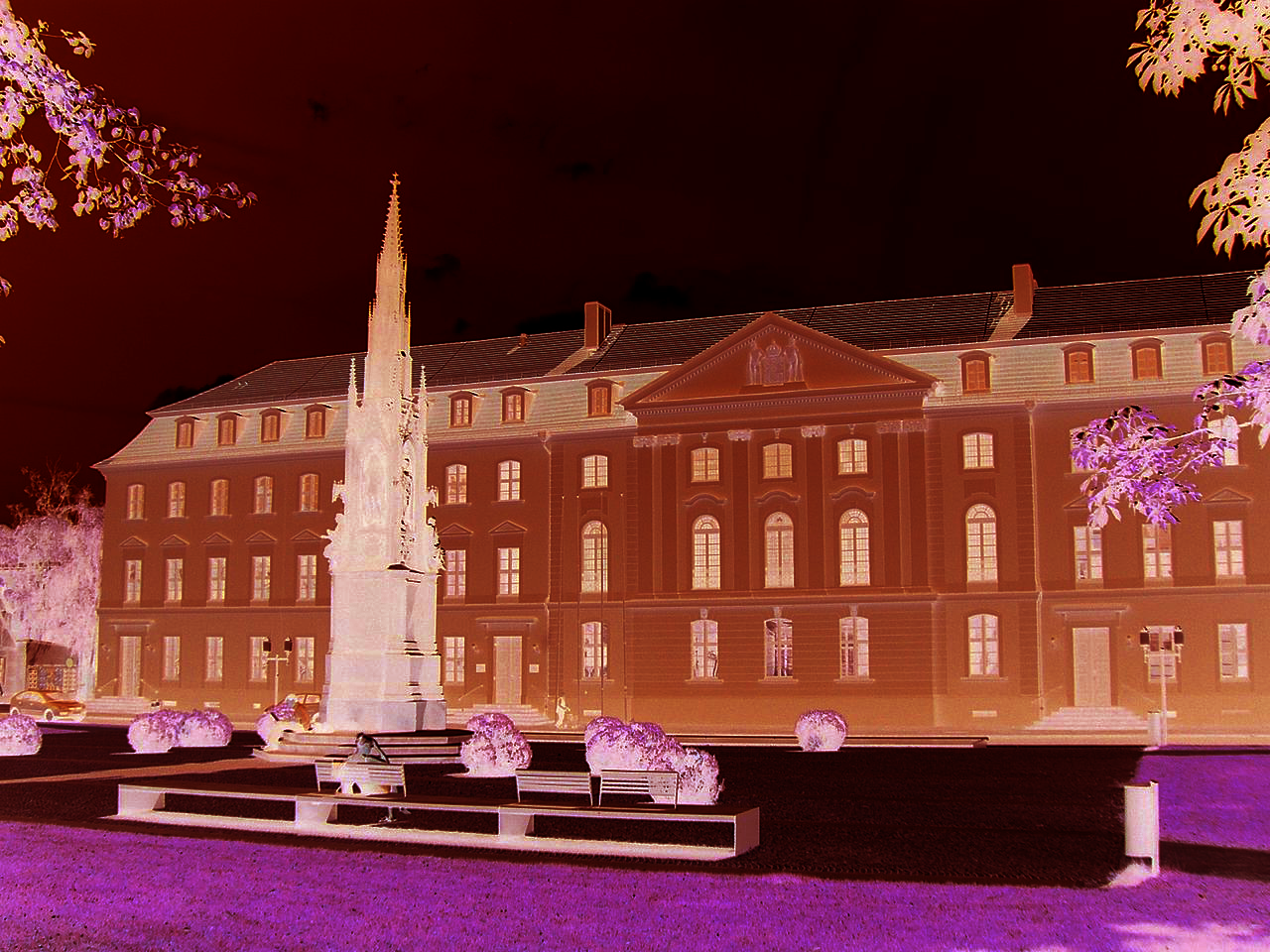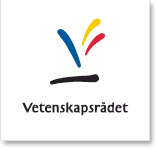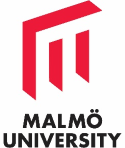BLOG Report of the Conference “The Study of Antisemitism in Scandinavia –Where Are We Heading?” 5-7 February 2018 (Greifswald)

by Mirko Harmel
Introduction: Organization and aim
The organizers aim was to establish a network of researchers from across Scandinavia, who are en-gaged in the study of antisemitism. The three principal objectives of the network are to provide a platform for researchers to stay in touch up-to-date with each others scholarship, to help scholars or-ganise and plan collaborative projects more strategically, and to organise annual meetings. A col-lection of articles based on papers given at the conference as well as contributions written by scho-lars who were unable to attend is planned for publication in 2019.
The conference organisers Professor Cordelia Heß and Docent Jonathan Adams1 are both resear-chers in the project “Antisemitismens arkiv i Skandinavien: Kunskapsproduktion och stereotyper i ett långt historiskt perspektiv”. This project received funding from the Swedish Research Council (“Vetenskapsrådet”) and is scheduled to run from 2016 to 2019.
One of the aims of this project is to investigate whether modern antisemitism is the same as, or si-milar to its medieval forebears or if it is essentially different. The project description states, that there are two opposed theories regarding the nature and emergence of anti-Jewish hatred. It descri-bes antisemitism as ‘the longest hatred’, an enduring, universal, essentially unchanging hatred which has continued from the Middle Ages to the present day. 2 Concerning Scandinavia, the leading members of the project argue that, given the relatively poor sources for the pre-Reformation era, it seems particularly difficult to establish (or disprove) continuities in this era.3
The conference about antisemitism in Scandinavia was organised to announce that this project will investigate antisemitism in Scandinavia as a phenomenon of longue durée, without suggesting a straight-forward continuity between pre-modern and modern forms of hatred towards Jews.
Heß and Adams focus on central questions, which are formulated in the following way:
“Does the existence of hatred towards Jews in areas with no Jewish population in the Middle Ages and today have the same causes as in those areas with “real” Jews? Can the rise and popularity of antisemitism from the nineteenth century onwards be explained solely within a contemporary framework? Can theories and analytical models of modern racial prejudice be applied to the Middle Ages and vice versa?”
The central theoretical concept of both researchers is “the archive”, in memory studies used as a metaphor for passively stored historical traces, which have lost their immediate communicative context and thus are available for reframing and reinterpretation.4 Within four thematic case studies, the historical roots of modern antisemitism in Scandinavia will be analysed: chosenness, murder, usury, and bodies. 5 Some of these case studies were used as an introduction to the conference.
The aim was to provide answers on a smaller scale, which regard specific areas, phenomena, and to-pics, and thereby offer a differentiation of the existing schemes of interpretation rather than their re-inforcement. The project does not aim to simply add further arguments in support of one of the two potential theories regarding the nature and emergence of modern antisemitism.
Therefore, the question what role religious anti-Judaism plays in racist antisemitism throughout a particular historical context follows. Common research questions for the case studies are thus: “Which archive of historical knowledge exists regarding a specific stereotype or anti-Jewish re-sentment? Which areas of knowledge does this archive stem from religion, literature, images, or other?” “Is there a distinct continuity visible between pre-modern and modern forms of antisemi-tism?”
The central idea of this project is the existence of antisemitic ideas and stereotypes as latent com-ponents of collective knowledge, existing permanently but leading to specific outbreaks in specific historical circumstances. 6
The first case study concerns ritual murder and the so-called blood libel. The project explains the circumstance surrounding allegations that the Jews killed Jesus Christ, which has been one of the most fatal and deadly allegations from Christians. Originally deriving from early Christian (mis)-readings of the Gospel, the concept of deicide Jews flourished during the Middle Ages resulting in a broad and general idea that Jews like to kill people, so Heß and Adams. 7
In Case Study I “Ritual Murder and Blood Libel” an article, printed in “Aftonbladet” in 2009 with the title “Våra söner plundras på sina organ”, was analysed. In this article the newspaper made a di-rect connection between illegal organ trade in the USA, in which a Rabbi was involved, to the army of Israel. The article accused Israeli soldiers of stealing organs from the victims of attacks during war operations. The development of blood libel accusations from the12th until the 20th century has a long history. The aspects of blood libel in „Aftonbladet” have different unconnected narrative threads which have a 17 year chronological gap between the original event and the accusation. In addition, an attempt at a scientific explanation of “Jewish blood thirst” was included the article. The perpetrators were the IDF soldiers and a rabbi in Brooklyn, so worldwide Jewry was used to explain that connection. The end result was that the article attempted to link disconnected events and take a political stance, despite logical gaps. The “Aftonbladet”-article demonstrates several aspects of a modernized blood libel with a lack of knowledge about blood symbolism, in this case replaced by general antisemitic stereotypes. It contents only fragmentary knowledge about religious anti-Jewish stereotypes, but it still helps to make sense of antisemitic stories. The conclusion of Case study I was that displaced stereotypes are still reproduced today.
The second case study of Heß concerns the 1838 Stockholm riots. In that year, King Karl XIV Jo-han and the Board of Commerce (Kommerskollegiet) abolished the law governing the Jewish popu-lation in Sweden. The Judereglemente had limited their immigration and settlement, but also gave them favourable taxation and access to certain areas of trade and business. The Stockholm daily newspapers fuelled a campaign against the new laws in the weeks after the publication of this deci-sion, which culminated in two weeks of almost daily recurrent attacks against mainly Jewish private houses. No one was hurt, but the authorities were concerned about the unrest. A new edict was pub-lished on the 23rd of September 1838, which revoked the Emancipation law. Heß states that these riots were probably the first physical attacks we know in Swedish history against Jewish inhabi-tants. These riots are the longest and most persistent. Additionally, they had an immediate effect on the Emancipation which was postponed for several decades. Both researchers argue, that there has basically been no research on these events since Hugo Valentin‘s study on Swedish Jewish history.
The analysis of the riots of 1838 came to different conclusions. First, the typology of the pogrom was different to others, because the death or expulsion of Jews from Stockholm was not the aim, and it was not spontaneous. The daily press made a strict division between the Stockholm Jews and “Jews“, writing about individual innocence, but a collective guilt. Moreover the resistance against the emancipation of Jews rose mainly because of fear of foreign do-mination and the „nation within a nation“. Racist and religious knowledge about “Jews” was repeated and updated, but did not in-clude the Swedish Jews. In the end, antisemitic knowledge was present, but needed considerable mobilization in order to be put into violent action.
The third case study concerned the history of the circumcision debate from the Middle Ages until today with its incorrect and misleading elements about Jewish live. This Part of the project involves uncovering the channels through which knowledge about Jews is transferred across time and bet-ween people. In his case study, Adams hopes to be able to uncover the extent to which stereotypes and fantasies about Jews go back in centuries and exert an influence on the debate about circumci-sion in Scandinavia today.
In addition to the case studies, I am recruited in order to work with a particular gap in Scandinavian scholarship. As a PhD-student in the project, I will write a thesis regarding the different images of Jews seen by people living in Scandinavia in the time of Reformation. My focus lies within Swe-den, specifically on the protestant reformers, in particular the well known Laurentius Andrae, Ola-vus Petri and Laurentius Petri. For these images, I will analyse different sermons, letters and papers of the three reformers. Should I later focus on other Scandinavian countries or people beside those reformers, then it will emphasized during the research process.
The following report shows which scholars attended to the conference and what their presentations were about. It will described how different the research on antisemitism is in the different coun-tries of Scandinavia or which themes are more in focus.
The course of the Conference
This conference did not deal primarily with the collecting of knowledge through antisemitism in Scandinavia with its outbreaks and forms, its historical dimensions or how this could be fought. Rather it was a matter of getting to know which research strategies and political demands exist con-cerning to antisemitism research or are necessary in the future. It was more a survey of the basic conditions in the different countries of Scandinavia and as well as the prospects of the research field in the closer future, concerning the contents as well as with regard to the institutional support.
The report will show how different the research on antisemitism is based and constructed in the Scandinavian countries. This concerns the different aims and periods the researchers focus on, the research infrastructure and what available sources the researchers got. Furthermore, it will offer what plans exist for the future, grounded on the actually achieved research.
In their introduction, Heß and Adams presented the results of the three different case studies which were described above.
The researchers working with Finnish material focused on the century before the First World War, the First World War itself, the interwar period and the Second World War.
Paavo J. Ahonen researches on “Ecclesiastical antisemitism in the Grand Duchy (1809-1917) and early Republic of Finland (1917-1933) and its effects on society and Christian self-understanding today”. He explained that the Second World War research has emerged in the last 20 years in Fin-land. Even though the worst period of antisemitism across Europe was the Second World War, the periods between 1809-1917 and 1917-1933 were the worst periods of antisemitism in Finland. The second period proves that antisemitism was much more common and widely accepted than pre-viously known.
His colleague Oula T. Silvennoinen from the University of Helsinki focused on the topic “Anti-semitism in Finland? Post-war silence and the new view”. His research based on Arne Somersalo, a great war volunteer in the German army, who was in the end the chief of Finnish Air Force and in addition a member of the Lapua movement, propagandist and chief editor. Furthermore he focused on the Alliances between the Finnish Army and the German SS, who were both involved in massa-cres. Another current theme covered in his research was Social Media about Fascist Parties in Fin-land.
André Swanström from the Åbo Akademi investigated “The influence of the Jäger movement on antisemitism within the Finnish political and military establishment in the early years of indepen-dence and the Finnish Waffen-SS volunteers”. Finns getting military training in Germany during the First World War with the aim of reaching Finnish independence through armed struggle against Russia.
The By-product was that the Jägers were present in most far-right organisations and events during inter-war period with a strong antisemitic influence and antisemitic prejudice made by German “precedents”. In addition, Swanström talked about a massacre in Vyborg 1918 with some hundred victims, and whether it was planned or not. In his mind, the Finnish patriotic historiography has tur-ned a blind eye to antisemitism and fascism, and tended to uplift members of fascist movements as good citizens. The SS Volunteers were the New Jägers, because former Jägers in the organizations recruiting the SS volunteers. Even official propaganda presenting the SS volunteers as a continua-tion of Jäger traditions. Some of the letters could be the proof of war crimes by Finnish volunteers, but André Swanström does not have permission to publish them yet.
The final researchers studying antisemitism in Finland, Simo Muir, concentrated on “The challen-ges of antisemitism historiography in Finland”. He argues that there still is a common be-lief in Finnish society, that in Finland no antisemitism existed or is existing in nowadays, but of course this not true. Finland shared ideology of Nazi Germany in some ways in different areas. The list about any gaps in research on antisemitism is very long.
Concerning to Norway, Christhard Hoffmann introduced his research on Antisemitism in contem-porary Norway inside the SHIFTBOUND-project, which is scheduled to run from 2017 to 2020. He explained that research on antisemitism was limited, and developed relative late in Norway. It was often driven by the personal interests of individual scholars and uncoordinated. The Focus in the majority of historical studies concerns the inter-war and occupation period 1918-1945. The main opinion in the Norwegian society was that, in the last decades, Antisemitism has not been a contem-porary problem and so the research on it has mostly dealt with personal engagement of single per-sonal interest, and not the bigger picture. Beside these circumstances, master`s theses from the Uni-versities of Oslo and Bergen were published in the 1990 and 2000s.
Actually, the SHIFTBOUND-project is fact currently preparing quantitative case studies and quali-tative studies about Antisemitism in Norway. In June 2016 the Norwegian Government worked out an Action Plan against Antisemitism within two existing projects, of which the SHIFTBOUND-pro-ject was one.A colleague of Christhard Hoffmann, Vibeke Moe, who is also in the project, discussed “The image of the Jews among Muslims in contemporary Norway”.
Besides the case studies of the organizers and my PhD-thesis in the project, concerning Sweden, we heard also others presentations about Anti-Judaism or Antisemitism. “The Swedish Association for Mission among the Jews as a Case Study” by Per Hammarström and a “A Swedish Sonderweg” by Harry Svensson were two of those. Per Hammarström`s presentation was based on the processes of immigration and the interest of the Christian mission of Jews in the 19th century in Sweden.
The question in his work is “How was Judaism and the Jewish people constructed among evange-lical Christians in Sweden in the late 19th century? Two articles on eschatology, introduced in Mis-sion Magazine for Israel, were examined. The 19th century is known as an era of missionaries, and also known for mis-sion among Jews. The Svenska Israel missonen published articles in 1894 for such mission. They were a kind of articles, which began amicably, but also arrogantly towards Jews. Besides the anti-Judaism parts like the Talmud-Jew, Lutheran theology was also very strong in it.
In some publications of the Svenska Israel missonen the way from anti-Judaism to antisemitism is entirely recognizable. The two articles were written by August Lindström and Frederic Godet: “Antichrist and the Jews” (1884) and Martin Faerden: “The importance of Israel, for the mission of the Future” (1880).
The lecture about “A Swedish Sonderweg” dealt like some Finnish lectures with German military influence in Scandinavia. Harry Svenssons paper concerns the naval city of Karlskrona. He argued that the navy in Karlskrona was strongly influenced by the British Royal Navy, rather than the Ger-man Navy as previously thought, and that it was therefore free from the antisemitism that was rife in the German military.
The presentation of Lena Roos about “Uppsala University: an ideal research environment for anti-semitism studies?” was presented by Lars M. Andersson, who has focused his research on “Com-parisons and theoretical discussions as a way forward. Concerning the theme of antisemitism in Scandinavia.” The presentation of Lena Roos had a focus on two departments in Uppsala: The De-partment of theology and the Department of history. In addition, it presented the Hugo Valentin Centre there with its actual research.
Lars M. Anderson argues in his presentation about “Comparisons and theoretical discussions as a way forward. Concerning theme of antisemitism in Scandinavia”, that when it comes to the study of Nordic antisemitism, all studies were badly needed and, as stated in the call for papers to this con-ference, there still are vast numbers of gaps both regarding specific periods, groups, milieus etc. that need to be filled. At least for the modern period a sufficient number of studies on economic, social, cultural and political issues relating to antisemitism to start making systematic comparisons.
Even when this is not the case, he would claim that it is anyway time to try to get rid of the shackles of methodological nationalism and engage in systematic transnational, regional com-parisons, the results of which should in turn be compared to findings regarding other countries and regions. A Scandinavian or Nordic perspective in the study of antisemitism thus makes sense in his opinion. The examples of systematic comparisons are few and far apart. This of course does not mean that there are no comparisons.
On the contrary, Scandinavian scholarship on antisemitism is thoroughly grounded in international research and the results are normally placed in both a Scandinavian and a wider international context. However, studies where the explicit aim is to compare anti-Semitic expressions and phenome-na in two or more Scandinavian countries are rare and so are works based on a systematic compari-son of primary sources from more than one Scandinavian country. Rare, they are, but they do exist. Andersson underlined, that it is time start discussing the differences between the expressions of An-tisemitism (or possibly even the different Antisemitism) in the Nordic countries in a more systema-tic way. For obvious reasons this also means it should now be possible to analyse the similarities. His question were for example: “Is it possible to discern a particular Nordic brand of Antisemitism and, if so, what does it consist of? How does it differ from antisemitism elsewhere, from other Anti-semitism? In addition, most importantly: What can the study of Antisemitism in the Nordic coun-tries as a whole contribute to the wider field of antisemitism studies?
Unfortunately there were not many attendees at the conference concerning the topic of Antisemi-tism in Denmark, but Clemens Räthel gave us with his presentation “(Up-)Staging the Jew? Antise-mitism and the performing arts in Scandinavia” an interesting point in the research on that topic. His focus lay on Denmark and Sweden in the 18th and 19th century. His research concerns Theatre and Art, where Jews were involved or Jewish characters were played in theatre. Examples were bearded men, mavericks, dressed in darkish coloured caftans, moneylen-ders, physical weakness; all very negatively connected. He underlined that the study of written drama is just one part of thea-tre. For what kind of theatre where Jewish characters produced, was one of his aims to clarify.
Professor Lars Dencik presented distinct forms of antisemitism in today’s Scandinavia. He showed a study demonstrating the discrimination and hate crime against Jews in EU Member States: expe-riences and perceptions of antisemitism. The EU-member states were Austria, Belgium, Denmark, France, Germany, Hungary, Italy, Latvia, Netherlands, Poland, Spain, Sweden and the UK. The pur-pose of the study was to investigate and compare how antisemitism influences the lives of Jews in these states. The method of the investigation was a questionnaire, which took approx. 30 minutes to complete. It included an Internet based survey and the recruited respondents through membership lists of Jewish organizations, announcements and endorsements by key figures and deals with a snowball system. The study was part of his book “Different antisemitism: Jews`perceptions and atti-tudes towards Jews.”
Professor David Feldman was invited to talk about “The meanings of antisemitism in the UK”. As the Director of the Pears Institute for the Study of Antisemitism at Birkbeck (University of Lon-don), he concluded the conference with a well-attended evening public lecture on the meanings of antisemitism in the UK.
In his paper, Feldman discussed the conceptual disagreements over how to define and recognise An-tisemitism. He explored the historical roots of the divergent conceptions of antisemitism and how these have implications today for academic research and political conflict in the UK.
As the main result of the conference it is seen, that both the concentration on periods is different in the countries of Scandinavia as also the organization and possibilities of the researchers are totally different. The hope of establishing a network concerning the research on antisemitism in Scandina-via still exists and is alive. A next conference is planned next year in Uppsala. For more information on the network, contact Mirko Harmel (mirko.harmel@gu.se).
1 This is not the first collaboration between Adams and Heß on the subject of attitudes towards Jews in Scandinavia. Together they have previously published the volumes Fear and Loathing in the North: Jews and Muslims in Medieval Scandinavia and the Baltic Region(Berlin: De Gruyter, 2015), Revealing the Secrets of the Jews: Johannes Pfefferkorn and Christian Writings about Jewish Life and Literature in Early Modern Europe(Berlin: De Gruyter, 2017), and The Medieval Roots of Antisemitism: Continuities and Discontinuities from the Middle Ages to the Present Day(New York: Routledge, 2018).
2 See https://historiskastudier.gu.se/digitalAssets/1612/1612036_the-archives-of-antisemitism-in-scandinavia---project-description.pdf, p.1.; https://www.routledge.com/The-Medieval-Roots-of-Antisemitism-Continuities-and-Discontinuities-from/Adams-Hess/p/book/9781138630888, edited by Jonathan Adams, Cordelia Heß.
3 See https://historiskastudier.gu.se/digitalAssets/1612/1612036_the-archives-of-antisemitism-in-scandinavia---project-description.pdf, p.1.
4 Michel Foucault: The Archaeology of Knowledge: And the Discourse on Language, 1968. Jacques Derrida: Archive Fever: A Freudian Impression (Religion and Postmodernism,), 1998. Jan Assmann: Religion & Cultural Memory - Ten Studies, 2005. Jan Assmann: Cultural Memory and Early Civilization: Writing, Remembrance, and Political Imagination, 2011.
5 See https://historiskastudier.gu.se/digitalAssets/1612/1612036_the-archives-of-antisemitism-in-scandinavia---project-description.pdf. p. 1.
6 See https://historiskastudier.gu.se/digitalAssets/1612/1612036_the-archives-of-antisemitism-in-scandinavia---project-description.pdf, pp. 1-2.
7 See https://historiskastudier.gu.se/digitalAssets/1612/1612036_the-archives-of-antisemitism-in-scandinavia---project-description.pdf, p. 3.




